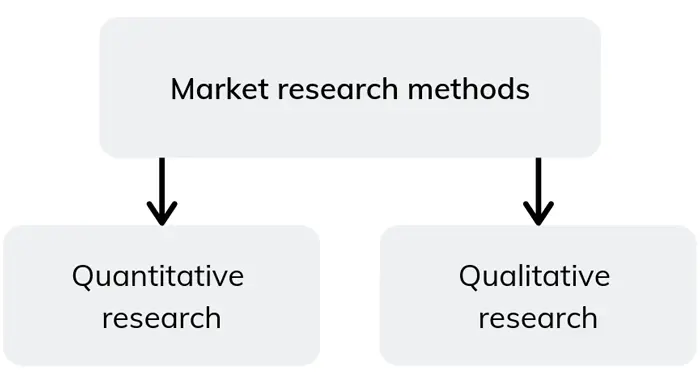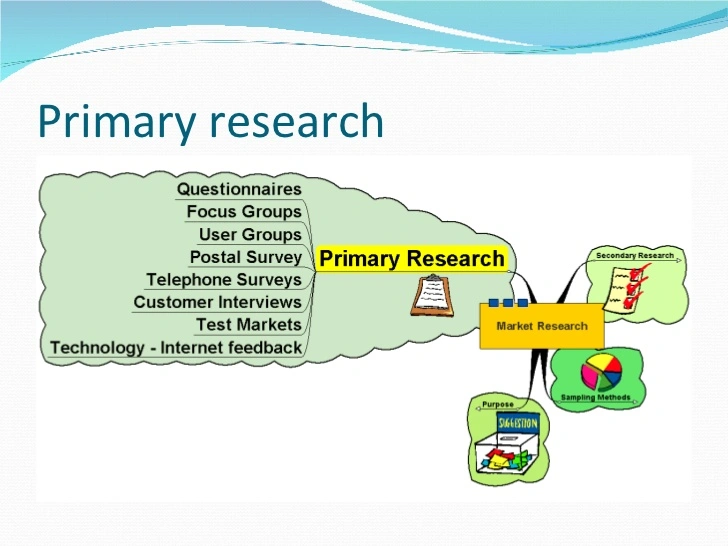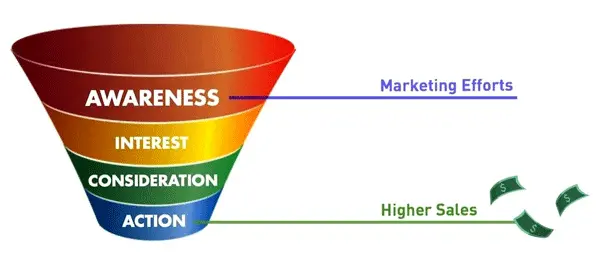How to Handle Market Research to Find New Opportunities for Your Business
1. What is market research?
2. Why and when do you need to handle market research?
3. What is the market potential?
4. Define the goals of your market research
5. Market research methods
6. Market research types
7. Primary market research
8. Secondary market research
Useful tools:
1. Newoldstamp - Email signature marketing
2. Mailchimp - Email builder and sender
3. Reply.io - Personal email outreach, calls, and tasks
4. Mailtrack - Email link opens tracking
5. Canva - Online tool for making designs
Market research was essentially born in the United States in the 1920s in the Golden Age of Radio. Companies that promoted themselves on the radio began to understand the importance of demographics when choosing radio programs to sponsor. At that time, companies were developed that had to interview people on the street. These companies had to find out whether readers recognized any ads that were published in the newspapers and magazines. Then they analyzed the collected data and improved publications.
What is market research?
Market research is the process of gathering information about the market, competitors, consumers' habits, needs, and preferences. The collected data are usually summarized in a report, which can help businesses market more effectively.
Why and when do you need to handle market research?
If you want to run a successful business, you need to get accurate and timely information to keep up with the latest trends. For example, tech giants like Apple and Microsoft always invest big money in discovering new trends in technology. They also pay particular attention to analyzing consumer behavior — this way the companies can grow and keep ahead of the competition.
When do you need to conduct market research? First and foremost, keep in mind that market research isn’t just for new businesses. It can help you identify prospective new customers & new business opportunities, understand your existing clients, develop effective strategies, discover & solve problems, set smart goals, prepare for business expansion, and more.
What is the market potential?
Market potential is a forecast of the overall demand for a specific product or service in a given business environment at a particular time. For example, if you are going to write a book on food photography, you will need to check all the books written on food photography and the sales they had. That is your market potential. Now let's walk through the four core elements to determine market potential:
- Market size. It is the total market sales potential of all companies taken together. For example, if you plan on launching a new perfume, then all the companies such as Chanel, Dior, Montale, Tom Ford, etc. are your competitors. And the combined sales of perfumes, including branded and non-branded products is your total market size.
- Market growth. To forecast the future of your product, you will need to check figures and facts from the last 5-10 years in the target industry to find out whether the market is growing or declining. For instance, you are going to sell computers, but then you find out that this market as compared to the smartphone market is declining. You probably don't want to enter the declining market, so instead, you can enter the growing smartphone market.
- Competition. It is also crucial to understand whether the competition in the chosen industry is low or high. This will help you select the right price for the product and set a promotional budget accurately.
- Target audience. Explore your customers to get a rough estimate of how often they will buy your product or service. For instance, if you plan to open a restaurant, it is going to be repeat business, because visitors who enjoy your food are more likely to keep coming back for more. But if you sell refrigerators, you need to understand that once people buy a new refrigerator, they probably won't need another one for the next ten years.
Define the goals of your market research
Some businesses dive straight into their market research and start gathering as muсh information as possible, mistakenly believing that it would come in handy. However, for market research to be successful, it's appropriate to start with setting your market research goals (e.g., issues that need to be solved). For example, if Company A wants to develop a new product, the purpose of the market research will be to find out what are potential customers missing. And if Company B wants to increase sales, the goal of market research will be to explore different territories, look into their buying patterns, improve packaging, and so on to bring better results.
Market research methods
When doing research, there are various methods you can use, but most of them fall into two main categories: quantitative and qualitative.

What is quantitative research?
Quantitative research often utilizes statistics and numerical data. It can also use scientific experiments, surveys, and structured observations. For instance, some company collects feedback from the event attendees about the value that they received from the event. The following questions may be used to obtain such feedback: "How satisfied were you with the overall performance during the sales phase?", "How likely will you recommend the organization to your friends and colleagues?", etc.
What is qualitative research?
This method focuses on gathering data through open-ended and conversational communication. Qualitative research is more about WHY people think so, and not only about what they think. For example, a bookstore owner thinks about some ways to increase sales and customer satisfaction. His team can interview the loyal customers of the bookstore and ask them what they liked and disliked about the store, assortment of books, etc. During the course of the conversation, the team may realize that most of their books are suitable for adults and there is not enough literature for children and teenagers.
So, to recap, quantitative research is objective, concrete, and measured. And qualitative research is subjective, interpretive, and descriptive.
Keep in mind, that not all research falls into one category. In most cases, you will require a mixture of both.
Market research types

image source: slideshare
There are two types of market research: primary and secondary. Primary research can be performed by you, or you can involve a third party organization. For example, a software company is about to launch a new tool for photographers and wants to conduct research about the features of the software they are going to introduce soon. The company can select a group of respondents involved in a photo business and conduct primary research with them to obtain feedback. Based on this research, the software developer can now make the necessary improvements in the features of the tool.
Secondary research is the data that already exists (newspapers, business directories, radio & TV, etc.)
Primary market research
Follow these steps to conduct primary research:
Step #1: Identify your buyer personas

image source: brightspark-consulting
First of all, you need to find out who your ideal customers are, what they need to solve their problems (e.g., define your buyer persona).
What is a buyer persona?
A buyer persona is a profile that depicts your ideal client.
What should be included in your buyer persona?
Some key characteristics you should find out:
- Are they male or female?
- What is their age?
- Are they married?
- Do they have a family?
- What is their annual income?
- What are their major challenges?
Step #2: Verify target market and audience
Once you’ve identified your buyer persona, it’s time to start researching your customers. The following are some of the main primary research tools.

Image source: pexels
Run market research survey
You can carry out an online, face-to-face, mail or telephone surveys. Questions used in surveys are usually multiple choice questions, yes or no questions, rank order questions, open-ended questions. Surveys are usually most effective when done with people who have recently interacted with you.
Tip: Read our blog post on how to make your emails more attractive and efficient.
Gather focus groups
Focus groups are generally more in-depth than surveys. Ten students discussing their experiences as students at the language academy is an example of a focus group. They can talk about what they like and what they don't at the academy and how this compares to their expectations.
Individual interviews
Another type of market research techniques is a personal interview also called a face-to-face survey. The reasons why researchers prefer the face-to-face method are high response rates and better observation of the behavior of the respondent.
Prepare research questions
The best way to make sure your customer research will be successful is to prepare a list of market research questions.
Example #1: Brand awareness

image source: The Career Foundation
Imagine that you’d like to find out whether your brand is popular with consumers. Some of the following questions may need to be considered:
- Which of the following brands have you heard of? (competitor A, competitor B, your brand);
- When did you first hear about our brand? (last month, last year, never heard of it before, etc.);
- In the past three months, where have you seen or heard about our brand? (friends, family, colleagues, social media, TV, Google, billboards, etc.);
- How would you describe your overall impression of our brand? (very favorable, not so favorable, etc.);
- How likely is that you would recommend us to your friends? (extremely likely, not at all likely, etc.)
Example #2: Demographics Survey
If you need to know your customers better, prepare demographic questions.
- Where do you live?
- What is your age?
- Are you male or female?
- What is your marital status?
- What is your household size?
- What is your employment status?
- What is your profession?
- Does anyone in your household run a business?
- What is your education level?
Example #3: Consumer behavior
Analyze consumer behavior by asking the following questions:
- Are you the primary decision maker regarding purchasing our product?;
- Which of these factors are critical to you when you make the decision? (price, familiarity with the brand, etc.);
- Why did you prefer our brand over another?;
- Where do you typically go to buy this type of product? (in store, Amazon, online store, etc.);
- How often do you buy this type of product?;
- How many other people in your organization use this type of product?
Secondary market research
Follow these steps to conduct secondary market research:
Step #1: Identify competitors

image source: thetool
Your secondary market research should begin with understanding your competitors. You might want to split them into three groups such as primary, secondary, and tertiary competitors. Primary competitors are businesses who sell the same or very similar products. Secondary competitors are those who offer something similar to a different consumer or sell a high- or low-end version of your product. Tertiary competitors are your potential partners (for example, you sell jewelry, they sell gems). To identify businesses whose products or services are similar to yours, you can:
Use review platforms
There you can find high performers in your industry and see what users think about them.
Google it
Check what sites come up when you type in industry related terms in Google search.

Identify their target audience
Now let's get back to the buyer persona we've created during the primary research stage earlier in this blog post. This will help us to understand how likely a web page found on Google and its content could steal website traffic from you. If the publication seems like the stuff your potential customers would be interested in, add the website owner to your list of competitors.
Compare pricing
Your pricing strategy is probably one of the most critical aspects of your business. To set the right price for your products, be sure to look at how your rivals have priced what they sell. Don't forget to check their prices across other channels such as Amazon, eBay, Alibaba, and so on.
Make a list of competitors’ strengths and weaknesses
Browse through their websites to check how solid their product photography is, how good their product descriptions are, where their call to actions are, etc. Do the same with their accounts on social media platforms. Contact their customer support and subscribe to newsletters to see what they include in their emails. Additionally, use Newoldstamp to create an email signature that enhances your professional image and keeps your brand consistent across all communications.
Tip: Read our article about 10 reasons to consider email signature as additional marketing channel.
Step #2: Find market research data from previous reports
Most secondary data come from resources such as industry journals, popular press, and government reports.
Use official council reports
In the government reports, you can find information about business and economic conditions, statistics on income, employment, growth rates, and much more. Examples of good places to start are EconomicIndicators.gov, sba.gov/advocacy, FedStats.gov, census.gov, Business.usa.gov.
Scan media publications
Be sure to look into media sources. Refer only to trusted, well reputed, and credible media to avoid wasting your time and efforts.
Identify market trends
To ensure your business will be able to stay relevant, you should be aware of trends in the market. These trends change because the needs and tastes of consumers change. Since customers drive your business' success, you need to make sure that your products/services are always in line with what people want and need. Look at industry leaders, visit workshops with experts and stakeholders, listen to your customers, analyze competitors.
Conclusion
To sum up, a well-planned and well-executed market research can help you determine whether you successfully can:
- Enter a new market
- Launch a new product or service
- Increase brand awareness
- Optimize your marketing strategy
- Change the perception of your brand, product or service
- Adjust pricing
- And more.



